Passionate about plants? Here’s a guide to plant science destinations you can tour on your own, most of them part of the School of Integrative Plant Science in Cornell University’s College of Agriculture and Life Sciences. See descriptions below map.
Close to the Plant Science Building

Liberty Hyde Bailey Conservatory – Adjacent to Plant Science Building on Tower Road, this living collection of mostly tropical and subtropical plants from around the world is used primarily for teaching and some research. Named for world-renowned horticulturist and the first dean of the College of Agriculture, the Conservatory collection is curated by the Plant Biology Section’s Bailey Hortorium and maintained by Cornell AES.
Visit the LHB Conservatory website.
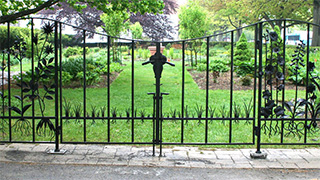
Minns Garden – Across the driveway to the west of the Conservatory, Minns Garden features flower and foliage plants from snow melt through late fall. Even when the snow is flying, it’s worth a quick visit to view the artful iron gates created by local sculptor Durand Van Doren. (Can you spot the seven famous apples hidden in the gate at the south entrance?) The garden is named for Lua A. Minns, Cornell’s first female floriculture faculty, who established the garden on its original site west of Garden Avenue in the 1910s to teach students hands-on horticulture.
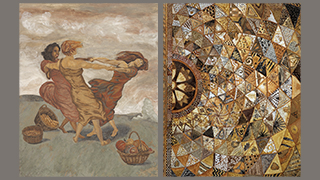
Soil paintings – Inside the east entrance to Bradfield and Emerson Halls (off patio near Fernow Hall), view paintings made entirely from soil-derived pigments. The paintings were created as part of a community engagement project to celebrate World Soil Day 2017. Three Sisters in Soil won the university division of the soil painting competition sponsored that year by the Food and Agriculture Organization of the United Nations (FAO). View videos and learn more about soil paintings.
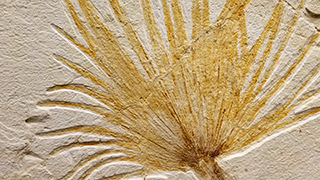
Plant Science 1st Floor displays – On the same level as the Ag Quad in the Plant Science Building (one flight up from the Conservatory), you can view fossils tracing the evolution of plants from Bailey Hortorium Paleobotany Collection outside the main School of Integrative Plant Sciences (SIPS) offices. There’s also a flat screen digital display featuring time-lapse videos and vignettes of SIPS activities from University Photography’s image collection, murals, posters and more.
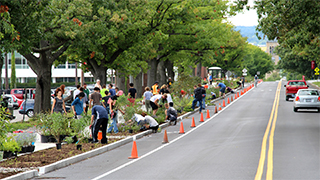
Sustainable Landscapes Trail – Developed by the Land Team of the President’s Campus Sustainability Committee, the trail showcases the sustainable design and ecosystems services of green infrastructure across the campus. Nearby stops include Mann Library Entrance SITES Accredited Garden, Mann Library Green Roof, Ag Quad Biodetention Basins, Tower Road Bioswale, Weill Trees in CU Soil, Oaks in CU Soil, Fernow Green Roof and Rain Garden. These living laboratories are used for research and education as well as helping us meet the University’s sustainability goals. More information, trail map.
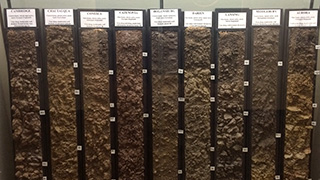
Soil Monolith Collection – Curated by the Soil and Crop Sciences Section and located temporarily in the hall at the east end of the Garden Level of Plant Science Building (use Tower Rd. entrance or go down one flight from Ag Quad entrance). Explore the many soil monoliths (excavated profiles) representing the diversity of New York soils and beyond. Learn about the different soil horizons from the organic matter layer on the surface down to the bedrock and how we classify them. View these videos to learn more about soil monoliths.
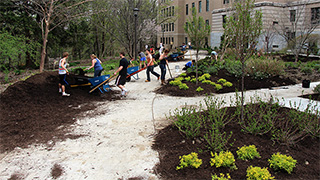
Urban Eden Landscapes – For two decades, students in Creating the Urban Eden: Woody Plant Selection, Design, and Landscape Establishment took on real world projects, designing and installing gardens on campus each spring — including the one between the LHB Conservatory and the Plant Science Driveway in 2016. View this map to take a walking tour of locations designed and installed by students in the class, including and the bioswale on the south side of Tower Road that filters runoff.
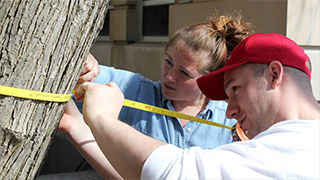
Woody Plants Tour – Take a quick tour of notable nearby trees, vines and shrubs at the Woody Plants Database. The website helps students and landscape professionals match woody plants to environmental conditions where they’ll thrive, and features 20 other walks. Also be sure to check out the protected ‘hidden garden’ tucked into a small courtyard northwest of the Conservatory where plants more commonly found in warmer climates grow.

Mann Library – Adjacent to Plant Science Building, Mann Library often hosts exhibits of interest to the plant science community, especially rotating exhibits in the display cabinets in the lobby and in the second floor gallery. On the third floor there is a permanent exhibit and timeline tracing the career of Cornell geneticist and Nobel Laureate, Barbara McClintock.

150 Years of Plant Science – In the first floor hallway of Emerson Hall, explore the history of plant science at Cornell through vintage images — the students, the faculty, the Nobel Laureates and other leaders and more. View video version.
Farther afield
Note: Cornell Orchards retail store is closed and the orchards are no longer open to the public.

Weed Science Teaching Garden – Located behind the Muenscher Greenhouses off Caldwell Road, this garden boasts 125 species of important weeds found in farm fields and gardens, poisonous plants, and species that can invade natural areas. The garden is used by the Soil and Crop Sciences Section to help students learn to identify these plant threats. The best time to visit is mid-summer to first frost. View Cornell Chronicle article.

Crops of the World Garden – Ever wonder what rice, sugarcane or even stevia look like in the field? Located at the northeast corner of Caldwell Field adjacent to Arboretum Road, this demonstration garden showcases dozens of economically important food, textile and other crops from around the world, including historical corn row spacings, the Iroquis ‘Three Sisters’ planting method and more. The best time to visit is mid-summer to first frost. Visit the Crops of the World Garden website.
Other destinations

Cornell Botanic Gardens – Cornell’s world-class botanical gardens, arboretum and natural areas are alive with plants, purpose and presence, and help make the university unique among its peers. Stop by the Nevin Welcome Center to view displays or pick up a map. Visit the Plantations’ website to plan your visit.

CU in Nature – Helps you find locations around campus where you can connect with nature to reduce stress and improve your mood, alertness, concentration and overall sense of well-being. Time in nature = a healtier you. Visit the Nature Rx@Cornell website.


